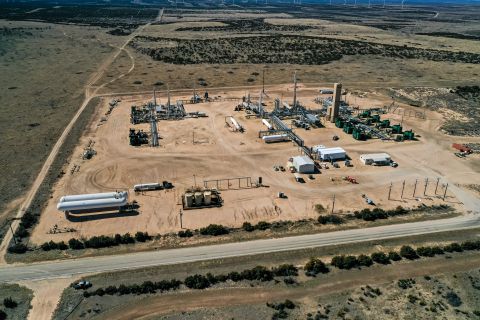
The U.S. Energy Information Administration (EIA) on April 14 unveiled a portion of its Annual Energy Outlook (AEO) 2014 forecast indicating that liquefied natural gas (LNG) would take a 35% share of the U.S. locomotive fuel market (currently nearly 100% diesel) by 2040.
“In the reference [AEO baseline forecast] case, LNG fuel use increases from just over 1 trillion Btu [British thermal units] in 2017 to 148 trillion Btu in 2040, or 35% of total freight rail energy consumption,” according to the EIA.
“In the ‘high rail LNG’ case, LNG fuel consumption increases to 392 trillion Btu in 2040, or 95% of freight rail energy consumption.
”LNG consumption in the ‘low rail LNG’ case increases to just 64 trillion Btu, or 16% of total freight energy consumption.
“Even under the ‘high rail LNG’ case, overall demand for natural gas as a result of a switch to LNG would increase overall demand for natural gas by less than 1%, resulting in a minimal effect on natural gas prices,” according to the EIA.
The seven major U.S. freight railroads in 2012 consumed more than 3.6 billion gallons of diesel fuel, or 7% of all diesel fuel consumed in the United States, the EIA noted.
Those railroads spent more than $11 billion on diesel fuel in 2012, which accounted for 23% of their total operating expenses, according to the EIA.
“Given [the EIA’s] expected price difference between LNG and diesel fuel, future fuel savings are expected to more than offset the approximately $1 million incremental cost associated with an LNG locomotive and its tender,” compared to a conventional diesel-electric locomotive, according to the EIA.
“However, in addition to the risk surrounding future fuel prices, other factors including operational, financial, regulatory, and mechanical challenges also affect fuel choices by railroads.
“Some major railroad operators view the potential of LNG-fueled trains as similar to the switch from steam propulsion to diesel in the 1940s and 1950s, a revolution in freight rail known as dieselization.
“Others have responded with more caution, likening the potential switch to the more evolutionary advance from using direct current motors to alternating current (AC) motors, which allows fewer locomotives to pull the same load. The change towards AC motors has been ongoing since the early 1990s.
Recommended Reading
J.P. Morgan, Capital One Commit $260MM to Arizona Solar Project
2024-10-15 - Arizona’s Box Canyon solar project secured a $260 million tax-equity financing commitment from Capital One and an affiliate of J.P. Morgan.
BP Profit Falls On Weak Oil Prices, May Slow Share Buybacks
2024-10-30 - Despite a drop in profit due to weak oil prices, BP reported strong results from its U.S. shale segment and new momentum in the Gulf of Mexico.
Dividends Declared the Week of Oct. 28
2024-11-01 - Here is a compilation of dividends declared this week for select upstream, midstream and downstream companies.
Midstream M&A Adjusts After E&Ps’ Rampant Permian Consolidation
2024-10-18 - Scott Brown, CEO of the Midland Basin’s Canes Midstream, said he believes the Permian Basin still has plenty of runway for growth and development.
Baker Hughes Wins Contracts for Woodside’s Louisiana LNG Project
2024-12-30 - Bechtel has ordered gas technology equipment from Baker Hughes for the first phase of Woodside Energy Group’s Louisiana LNG development.
Comments
Add new comment
This conversation is moderated according to Hart Energy community rules. Please read the rules before joining the discussion. If you’re experiencing any technical problems, please contact our customer care team.





